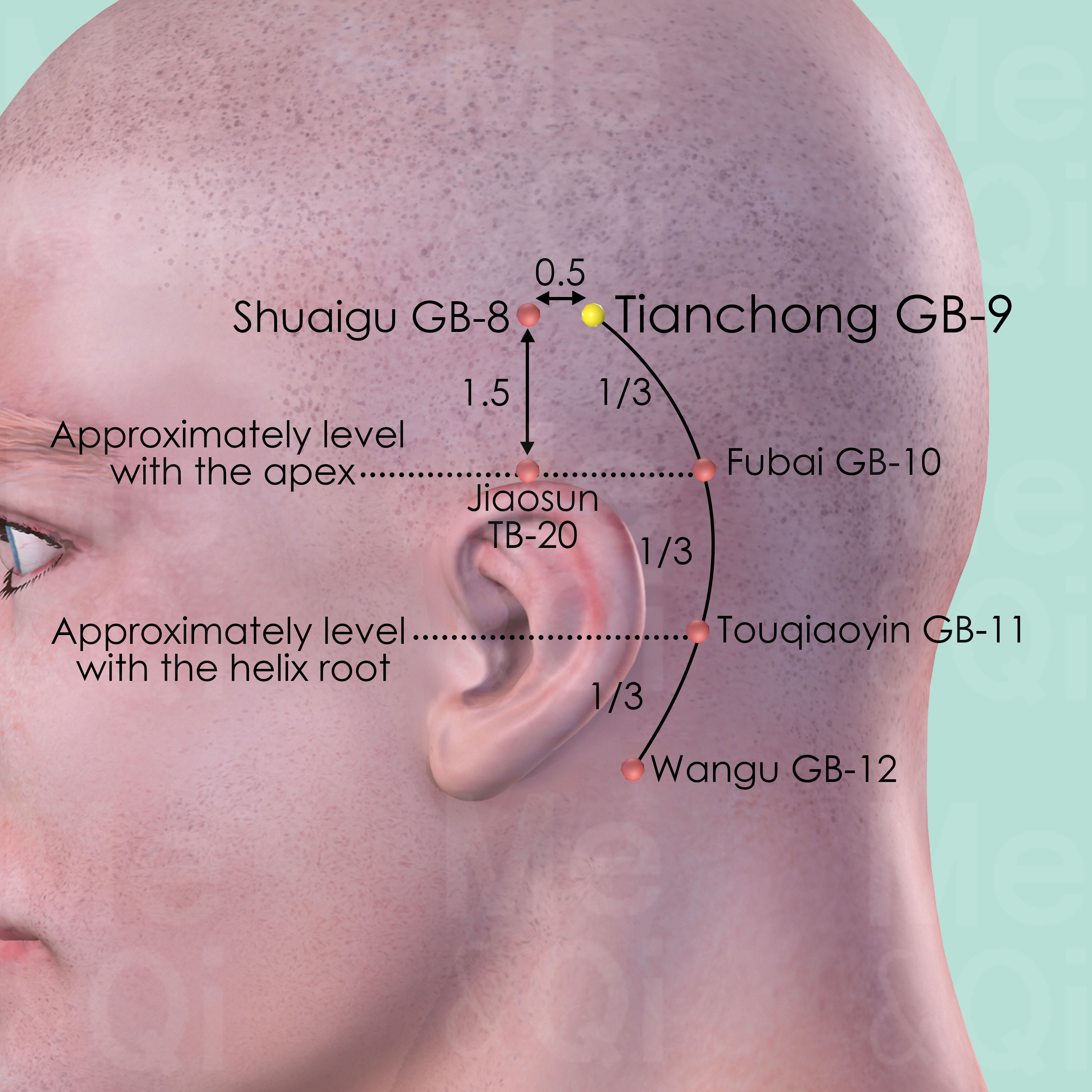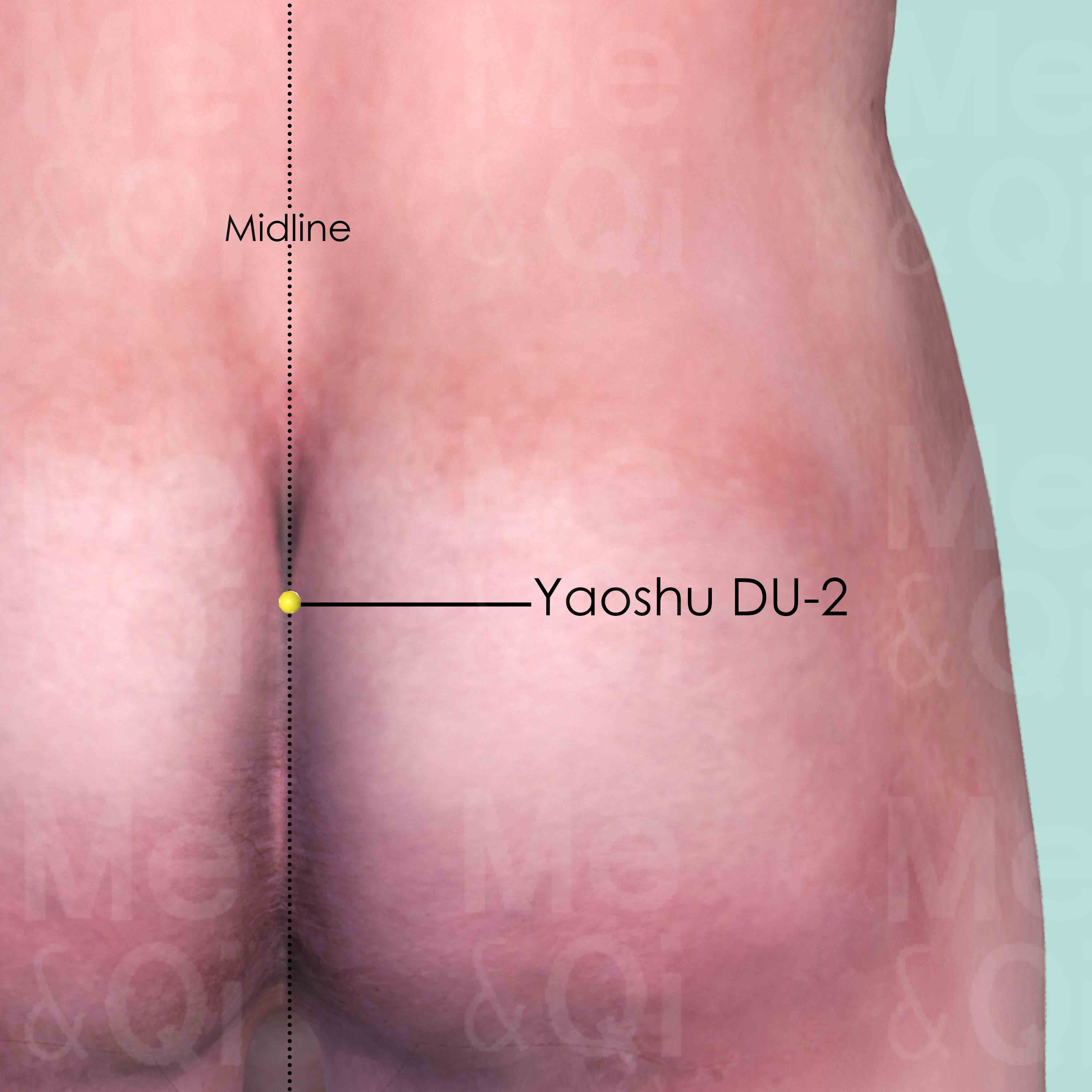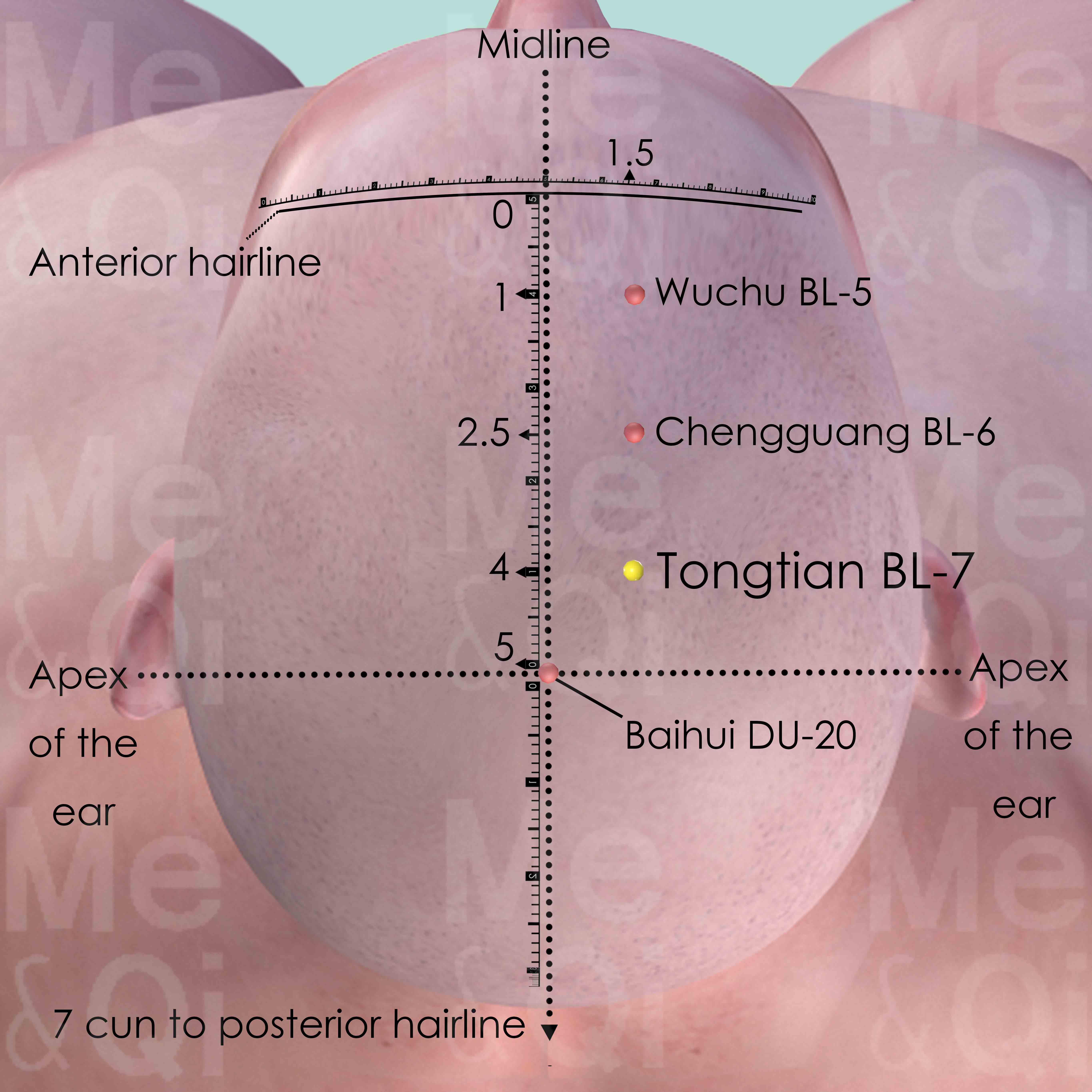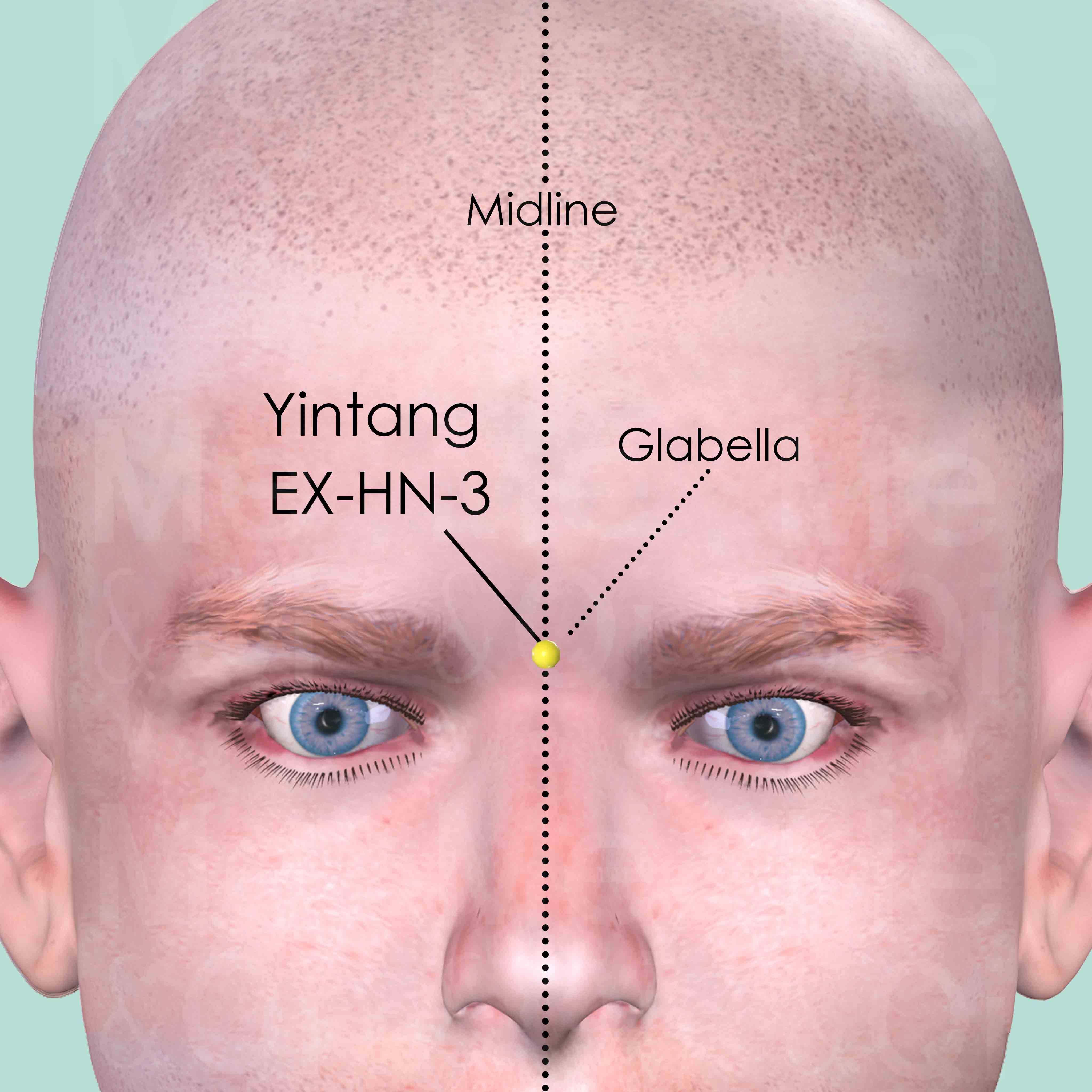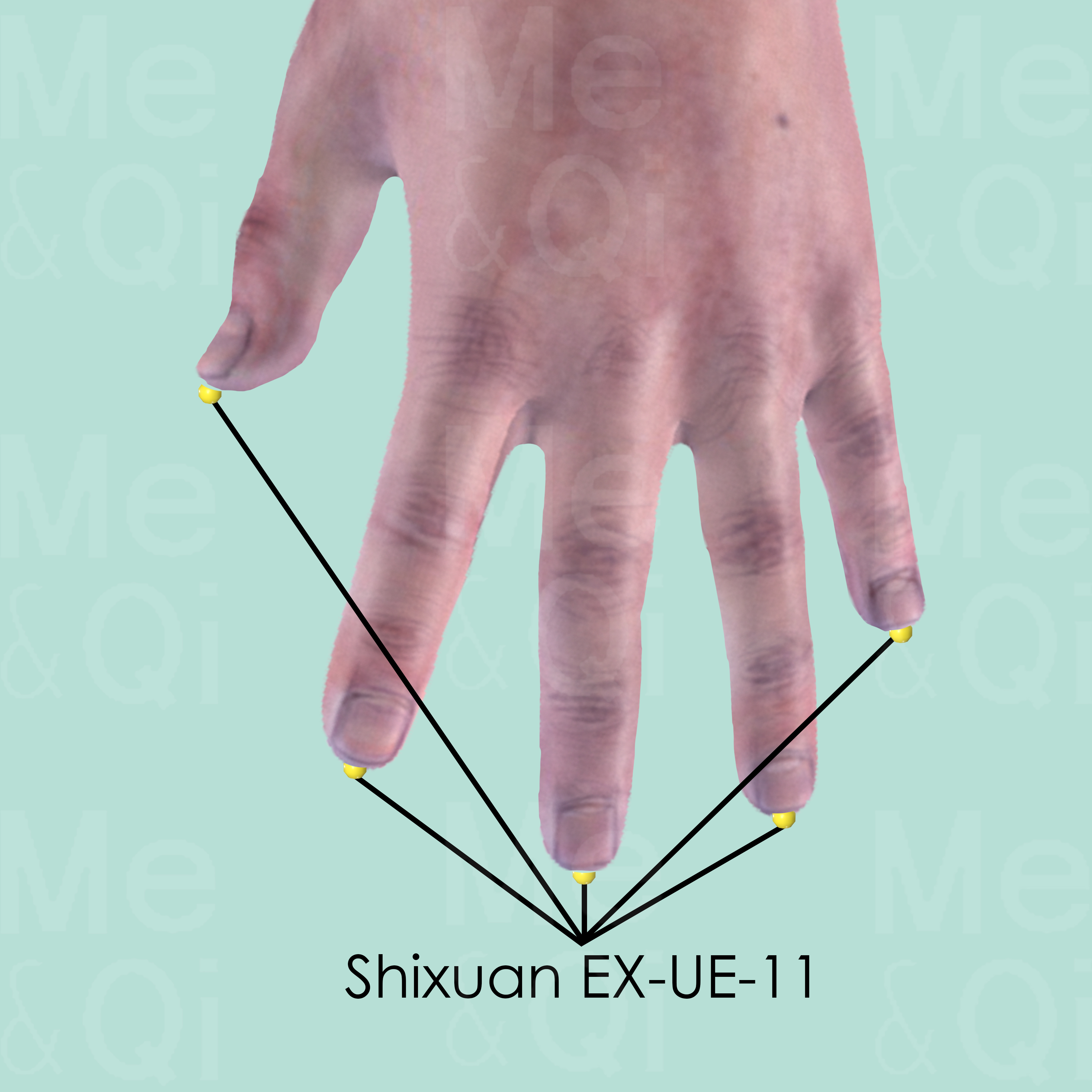Convulsionsaccording to TCM
Symptom family: Seizure and Epileptic Disorders
Sub-symptom(s): Chronic Convulsion Acute Convulsion Clonic Seizure
What is Convulsions?
Convulsions, also known as fits, are sudden, involuntary muscle contractions that can cause the body to shake uncontrollably. These episodes can vary from brief tremors to prolonged and repetitive jerking.
Convulsions are often symptomatic of an underlying neurological condition and can be classified into chronic, acute, or clonic seizures based on their duration and intensity.
How does TCM View Convulsions?
In Traditional Chinese Medicine, convulsions are symptomatic of deeper imbalances, referred to as 'patterns.' Understanding these patterns is crucial as they guide the TCM practitioner to tailor treatments that address the root disharmonies, whether it's an invasion of Wind, or a Excess of Heat
Identifying the right pattern is essential for restoring the individual's energetic equilibrium, ensuring a treatment that is specific to their unique condition.
Root Causes of Convulsions in TCM
TCM attributes convulsions to several internal imbalances. Heat victorious stirring Wind is a pattern where extreme Heat in the body leads to Wind, which disrupts the flow of Qi and Blood, resulting in convulsions. This condition typically presents with symptoms like high fever, limb twitching, and clenching of teeth.
Interior Liver Wind, on the other hand, reflects a chronic state that may involve tremors, dizziness, and involuntary movements. These patterns underscore the intricate relationship between the body's internal state and convulsive episodes.
Explore below more details about what might cause Convulsions according to TCM.
- By Syndrome
- By Organ
- Wind
- Heat
- Yang Excess
- Liver
- Pericardium
Wind
In TCM "Wind" is a concept that represents a pattern of disharmony, often characterized by its sudden and unpredictable nature, much like a gusty wind changing direction without warning. This pattern is associated with symptoms that come and go quickly or move around the body, such as itching, tremors, or even certain types of pain. Wind is considered to be a primary cause of illnesses that have these rapidly changing characteristics. In TCM, external Wind often refers to illnesses that start suddenly, like the common cold, believed to be caused by external pathogenic factors like climatic changes. On the other hand, internal Wind can be linked to internal imbalances and can manifest in conditions like dizziness or spasms. ... see more
Wind Patterns That Can Lead to Convulsions
Common Symptoms: Dizziness Coma High Fever Limb Twitching Stiff Neck Opisthotonos Hand Tremor Paralysis
| Pattern Name | Relevant Symptoms | Relevant Formulas |
|---|---|---|
| Heat victorious stirring Wind | Convulsions, High fever, Loss of consciousness, Limb twitching, Stiff neck, Opisthotonos, Eyeballs turning up, Clenching of teeth... see more | Ling Jiao Gou Teng Tang |
| Interior Wind | Convulsions, Hand tremor, Dizziness, Paralysis, Coma, Tic disorder, Mouth deviation, Eye deviation, Tremors, Headaches, Limb numbness... see more | Ling Jiao Gou Teng Tang | Tian Ma Gou Teng Yin | Liu Wei Di Huang Wan | Qi Ju Di Huang Wan | E Jiao Ji Zi Huang Tang | Zhen Gan Xi Feng Tang | Bu Gan Tang | Si Wu Tang |
| Liver Wind agitating Internally due to extreme Heat | Convulsions, High fever, Stiff neck, Hand tremor, Opisthotonos | Ling Jiao Gou Teng Tang | Tian Ma Gou Teng Yin | Feng Yin Tang |
| Liver Wind agitating Internally due to Liver Yang Rising | Convulsions, Tremors, Facial tic, Severe dizziness, Tinnitus, Headaches, Hypertension, Dry throat, Dry eyes, Blurry vision, Limb numbness, Tingling of limbs, Poor memory, Back pain, Oliguria, Night sweats... see more | Liu Wei Di Huang Wan | Qi Ju Di Huang Wan | E Jiao Ji Zi Huang Tang | Zhen Gan Xi Feng Tang | Feng Yin Tang |
Heat
In TCM "Heat" signifies an excess of Yang energy, leading to an imbalance where heat predominates over the body's cool Yin aspects. This condition is metaphorically akin to an internal over-heating. Symptoms indicative of Heat can include feelings of warmth, fever, sweating, irritability, red face, thirst with a preference for cold drinks, and a rapid pulse. The tongue may appear red with a yellow coating. Unlike the common interpretation of heat in terms of temperature, in TCM, it represents a state of hyperactivity or inflammation in the body.... see more
Heat Patterns That Can Lead to Convulsions
Common Symptoms: Coma High Fever Stiff Neck Opisthotonos Nighttime Fever Delirium Confusion Incoherent Or Confused Speech
| Pattern Name | Relevant Symptoms | Relevant Formulas |
|---|---|---|
| Heat in Pericardium | Convulsions, Nighttime fever, Delirium, Confusion, Incoherent or confused speech, Cold extremities... see more | Qing Ying Tang | Zhi Bao Dan |
| Heat victorious stirring Wind | Convulsions, High fever, Loss of consciousness, Limb twitching, Stiff neck, Opisthotonos, Eyeballs turning up, Clenching of teeth... see more | Ling Jiao Gou Teng Tang |
| Liver Wind agitating Internally due to extreme Heat | Convulsions, High fever, Stiff neck, Hand tremor, Opisthotonos | Ling Jiao Gou Teng Tang | Tian Ma Gou Teng Yin | Feng Yin Tang |
Yang Excess
Yang Excess in TCM refers to a state where there is an overabundance of Yang energy, leading to symptoms of heat and hyperactivity in the body. This pattern of disharmony often arises from factors like stress, excessive physical activity, overconsumption of spicy or heating foods, or an internal imbalance that causes Yang to flare up. Symptoms of Yang Excess include a feeling of heat, red face, irritability, restlessness, thirst, constipation, and a rapid, forceful pulse. Treatment in TCM for Yang Excess aims to cool down and subdue the excessive Yang while nurturing Yin energy to restore balance.... see more
Yang Excess Patterns That Can Lead to Convulsions
| Pattern Name | Relevant Symptoms | Relevant Formulas |
|---|---|---|
| Liver Wind agitating Internally due to Liver Yang Rising | Convulsions, Tremors, Facial tic, Severe dizziness, Tinnitus, Headaches, Hypertension, Dry throat, Dry eyes, Blurry vision, Limb numbness, Tingling of limbs, Poor memory, Back pain, Oliguria, Night sweats... see more | Liu Wei Di Huang Wan | Qi Ju Di Huang Wan | E Jiao Ji Zi Huang Tang | Zhen Gan Xi Feng Tang | Feng Yin Tang |
Liver
In TCM the Liver is viewed as the organ responsible for the smooth flow of Qi, Blood, and emotions throughout the body. It plays a key role in regulating mood, storing blood, supporting digestion, and ensuring the health of tendons and eyes. When the Liver malfunctions or is imbalanced in TCM, it can lead to a range of issues such as irritability, mood swings, menstrual irregularities, eye problems, and muscular stiffness or pain. A malfunctioning Liver in TCM reflects not only physical disturbances but also emotional and mental disharmony, emphasizing the holistic approach of TCM in addressing health and wellness.... see more
Liver Patterns That Can Lead to Convulsions
Common Symptoms: High Fever Limb Twitching Stiff Neck Opisthotonos Dizziness Coma Loss Of Consciousness Eyeballs Turning Up
| Pattern Name | Relevant Symptoms | Relevant Formulas |
|---|---|---|
| Heat victorious stirring Wind | Convulsions, High fever, Loss of consciousness, Limb twitching, Stiff neck, Opisthotonos, Eyeballs turning up, Clenching of teeth... see more | Ling Jiao Gou Teng Tang |
| Liver Wind agitating Internally due to extreme Heat | Convulsions, High fever, Stiff neck, Hand tremor, Opisthotonos | Ling Jiao Gou Teng Tang | Tian Ma Gou Teng Yin | Feng Yin Tang |
| Liver Wind agitating Internally due to Liver Yang Rising | Convulsions, Tremors, Facial tic, Severe dizziness, Tinnitus, Headaches, Hypertension, Dry throat, Dry eyes, Blurry vision, Limb numbness, Tingling of limbs, Poor memory, Back pain, Oliguria, Night sweats... see more | Liu Wei Di Huang Wan | Qi Ju Di Huang Wan | E Jiao Ji Zi Huang Tang | Zhen Gan Xi Feng Tang | Feng Yin Tang |
Pericardium
In TCM the Pericardium is more than a physical membrane protecting the heart; it's considered an organ system that acts as the "Heart's protector." It plays a crucial role in safeguarding the heart from external pathogenic factors and emotional disturbances. The Pericardium is also involved in regulating blood circulation and influencing emotional well-being, especially in terms of relationships and intimacy. When the Pericardium malfunctions or is imbalanced in TCM, it can lead to symptoms that mirror heart issues, such as chest pain or palpitations, but often with an emotional component like difficulty in forming emotional connections or excessive vulnerability to external stressors. Additionally, a disturbed Pericardium can result in sleep disturbances, anxiety, and in severe cases, mental confusion, reflecting its integral role in both physical heart protection and emotional balance.... see more
Pericardium Patterns That Can Lead to Convulsions
| Pattern Name | Relevant Symptoms | Relevant Formulas |
|---|---|---|
| Heat in Pericardium | Convulsions, Nighttime fever, Delirium, Confusion, Incoherent or confused speech, Cold extremities... see more | Qing Ying Tang | Zhi Bao Dan |
TCM Herbal Formulas for Convulsions
To address convulsions, TCM suggests formulas that pacify Internal Wind and clear Heat. Ling Jiao Gou Teng Tang, with key ingredients such as Saiga antelope's horns, is commonly prescribed to calm the Liver Wind and halt tremors.
When convulsions are coupled with high fever and delirium, indicative of Heat in the Pericardium, formulas like Qing Ying Tang may be used. It contains cooling herbs such as Water Buffalo Horns to reduce nutritive-level Heat. Each herbal prescription is tailored to the individual's unique pattern of disharmony, ensuring a targeted approach to treatment.
Explore below some TCM herbal formulas used to address convulsions, organized by cause and by formula type.
- By Cause
- By Formula Type
- Wind
- Heat
- Yang Excess
- Formulas that pacify and extinguish internal wind
- Formulas that nourish yin and tonify
- Formulas that tonify blood
- Formulas that clear nutritive-level heat
- Formulas that clear heat and open sensory orifices
- Formulas that dredge and disperse external wind
Top Formula for Wind:
Ling Jiao Gou Teng Tang
Suitable for Wind patterns that may cause convulsions, such as Heat victorious stirring Wind or Interior Wind
Learn moreAll Formulas Recommended for Convulsions Caused by Wind
| Formula | Patterns Suitable For |
|---|---|
| Ling Jiao Gou Teng Tang | Heat victorious stirring Wind, Interior Wind, Liver Wind agitating Internally due to extreme Heat... see more |
| Tian Ma Gou Teng Yin | Interior Wind, Liver Wind agitating Internally due to extreme Heat |
| Liu Wei Di Huang Wan | Interior Wind, Liver Wind agitating Internally due to Liver Yang Rising |
| Qi Ju Di Huang Wan | Interior Wind, Liver Wind agitating Internally due to Liver Yang Rising |
| E Jiao Ji Zi Huang Tang | Interior Wind, Liver Wind agitating Internally due to Liver Yang Rising |
| Zhen Gan Xi Feng Tang | Interior Wind, Liver Wind agitating Internally due to Liver Yang Rising |
| Feng Yin Tang | Liver Wind agitating Internally due to extreme Heat, Liver Wind agitating Internally due to Liver Yang Rising... see more |
| Bu Gan Tang | Interior Wind |
| Si Wu Tang | Interior Wind |
Top Formula for Heat:
Ling Jiao Gou Teng Tang
Suitable for Heat patterns that may cause convulsions, such as Heat victorious stirring Wind or Liver Wind agitating Internally due to extreme Heat
Learn moreAll Formulas Recommended for Convulsions Caused by Heat
| Formula | Patterns Suitable For |
|---|---|
| Ling Jiao Gou Teng Tang | Heat victorious stirring Wind, Liver Wind agitating Internally due to extreme Heat... see more |
| Tian Ma Gou Teng Yin | Liver Wind agitating Internally due to extreme Heat |
| Feng Yin Tang | Liver Wind agitating Internally due to extreme Heat |
| Qing Ying Tang | Heat in Pericardium |
| Zhi Bao Dan | Heat in Pericardium |
Top Formula for Yang Excess:
Liu Wei Di Huang Wan
Suitable for Yang Excess patterns that may cause convulsions, such as Liver Wind agitating Internally due to Liver Yang Rising
Learn moreAll Formulas Recommended for Convulsions Caused by Yang Excess
| Formula | Patterns Suitable For |
|---|---|
| Liu Wei Di Huang Wan | Liver Wind agitating Internally due to Liver Yang Rising |
| Qi Ju Di Huang Wan | Liver Wind agitating Internally due to Liver Yang Rising |
| E Jiao Ji Zi Huang Tang | Liver Wind agitating Internally due to Liver Yang Rising |
| Zhen Gan Xi Feng Tang | Liver Wind agitating Internally due to Liver Yang Rising |
| Feng Yin Tang | Liver Wind agitating Internally due to Liver Yang Rising |
Formulas that pacify and extinguish Internal Wind
These formulas are suitable for some convulsions-causing patterns like Heat victorious stirring Wind or Interior Wind.
One such formula is Ling Jiao Gou Teng Tang, with saiga antelope's horns as a key herb.
Other formulas of this category are listed in the table below.
All "formulas that pacify and extinguish internal wind" recommended for convulsions
| Formula | Patterns Suitable For (if applicable) |
|---|---|
| Ling Jiao Gou Teng Tang | Heat victorious stirring Wind, Interior Wind, Liver Wind agitating Internally due to extreme Heat... see more |
| Tian Ma Gou Teng Yin | Interior Wind, Liver Wind agitating Internally due to extreme Heat |
| E Jiao Ji Zi Huang Tang | Interior Wind, Liver Wind agitating Internally due to Liver Yang Rising |
| Zhen Gan Xi Feng Tang | Interior Wind, Liver Wind agitating Internally due to Liver Yang Rising |
Formulas that nourish Yin and tonify
These formulas are suitable for some convulsions-causing patterns like Interior Wind or Liver Wind agitating Internally due to Liver Yang Rising.
One such formula is Liu Wei Di Huang Wan, with prepared rehmannia as a key herb.
Other formulas of this category are listed in the table below.
All "formulas that nourish yin and tonify" recommended for convulsions
| Formula | Patterns Suitable For (if applicable) |
|---|---|
| Liu Wei Di Huang Wan | Interior Wind, Liver Wind agitating Internally due to Liver Yang Rising |
| Qi Ju Di Huang Wan | Interior Wind, Liver Wind agitating Internally due to Liver Yang Rising |
Formulas that dredge and disperse External Wind
These formulas are suitable for some convulsions-causing patterns like Liver Wind agitating Internally due to extreme Heat or Liver Wind agitating Internally due to Liver Yang Rising.
One such formula is Feng Yin Tang, with dragon bones as a key herb.
Formulas that tonify Blood
These formulas are suitable for some convulsions-causing patterns like Interior Wind.
One such formula is Bu Gan Tang, with prepared rehmannia as a key herb.
Other formulas of this category are listed in the table below.
All "formulas that tonify blood" recommended for convulsions
| Formula | Patterns Suitable For (if applicable) |
|---|---|
| Bu Gan Tang | Interior Wind |
| Si Wu Tang | Interior Wind |
Formulas that clear nutritive-level Heat
These formulas are suitable for some convulsions-causing patterns like Heat in Pericardium.
One such formula is Qing Ying Tang, with water buffalo horn as a key herb.
Formulas that clear Heat and open sensory orifices
These formulas are suitable for some convulsions-causing patterns like Heat in Pericardium.
One such formula is Zhi Bao Dan, with water buffalo horn as a key herb.
Acupoints for Convulsions
In TCM, acupoint therapy is used to stabilize the patient's internal energies and reduce convulsions. Points along the Gall Bladder Channel, such as Benshen GB-13, can help calm the Mind and subdue rising Liver Yang. Governing Vessel points like Shenzhu DU-12 clear Lung Heat and dispel Wind.
Houxi SI-3 on the Small Intestine Channel can regulate Governing Vessels and expel both Internal and External Wind, beneficial in easing the convulsive movements. These points are part of a larger network used in acupuncture to restore balance and prevent the recurrence of convulsions.
Explore below some acupoints used to address convulsions, organized by meridian.
- By Meridian
- Gall Bladder Channel
- Governing Vessel
- Bladder Channel
- Small Intestine Channel
- Pericardium Channel
- Extra Points: Head and Neck (EX-HN)
- Extra Points: Upper Extremities (EX-UE)
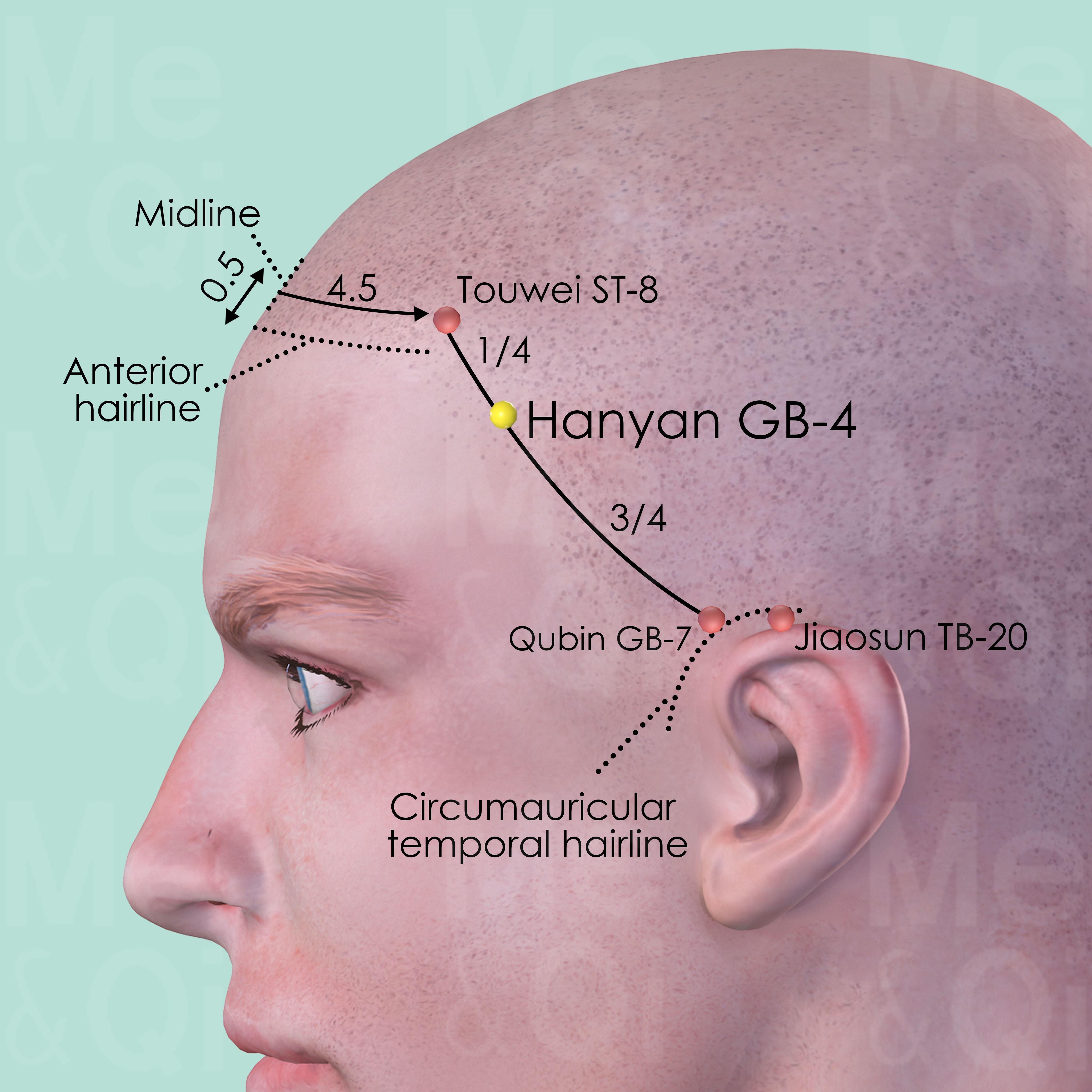
Hanyan GB-4
Within the hairline of the temporal region, midway of the upper half of the distance between Touwei ST-8 and Qubin GB-7.
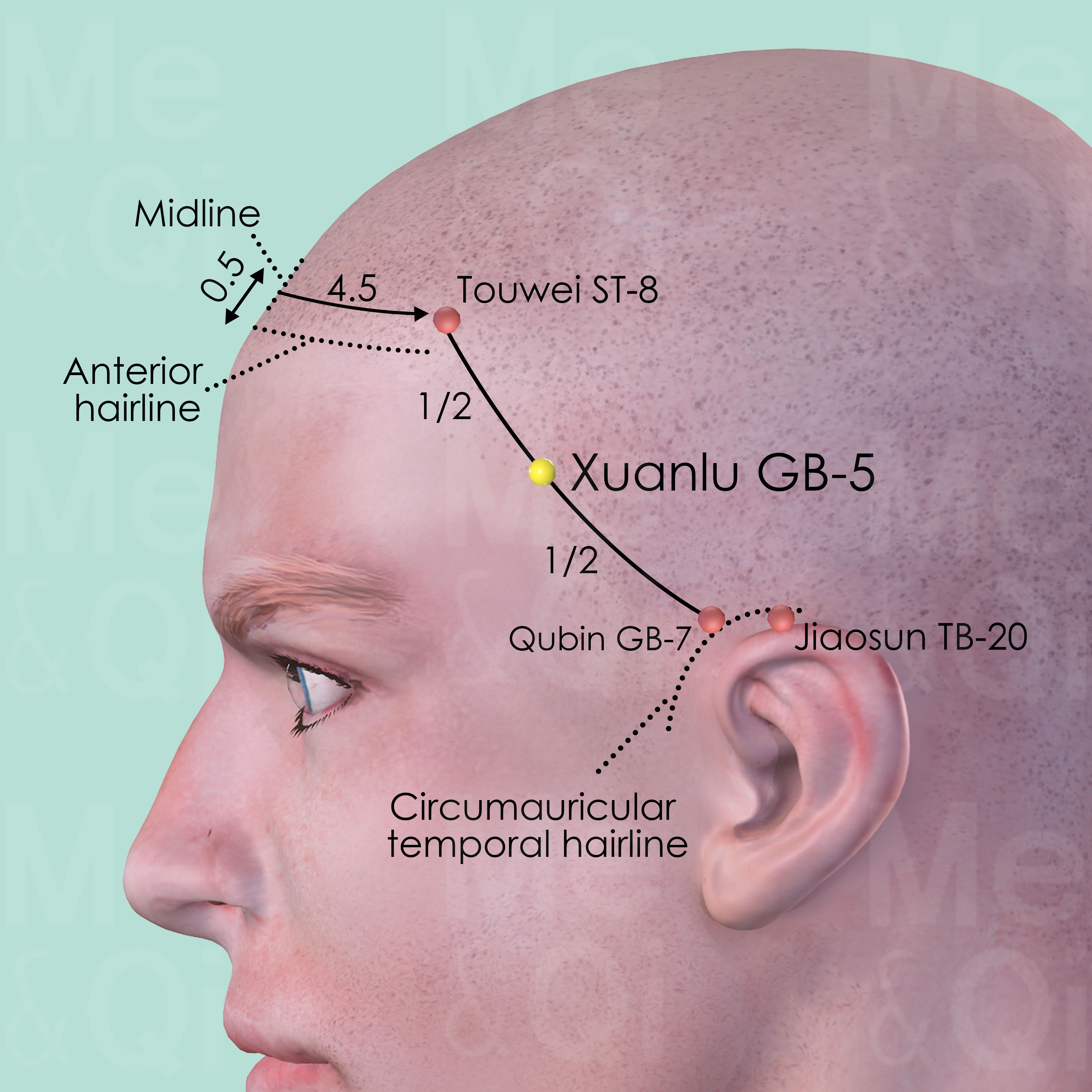
Xuanlu GB-5
Within the hairline of the temporal region, midway of the line connecting Touwei ST-8 and Qubin GB-7.
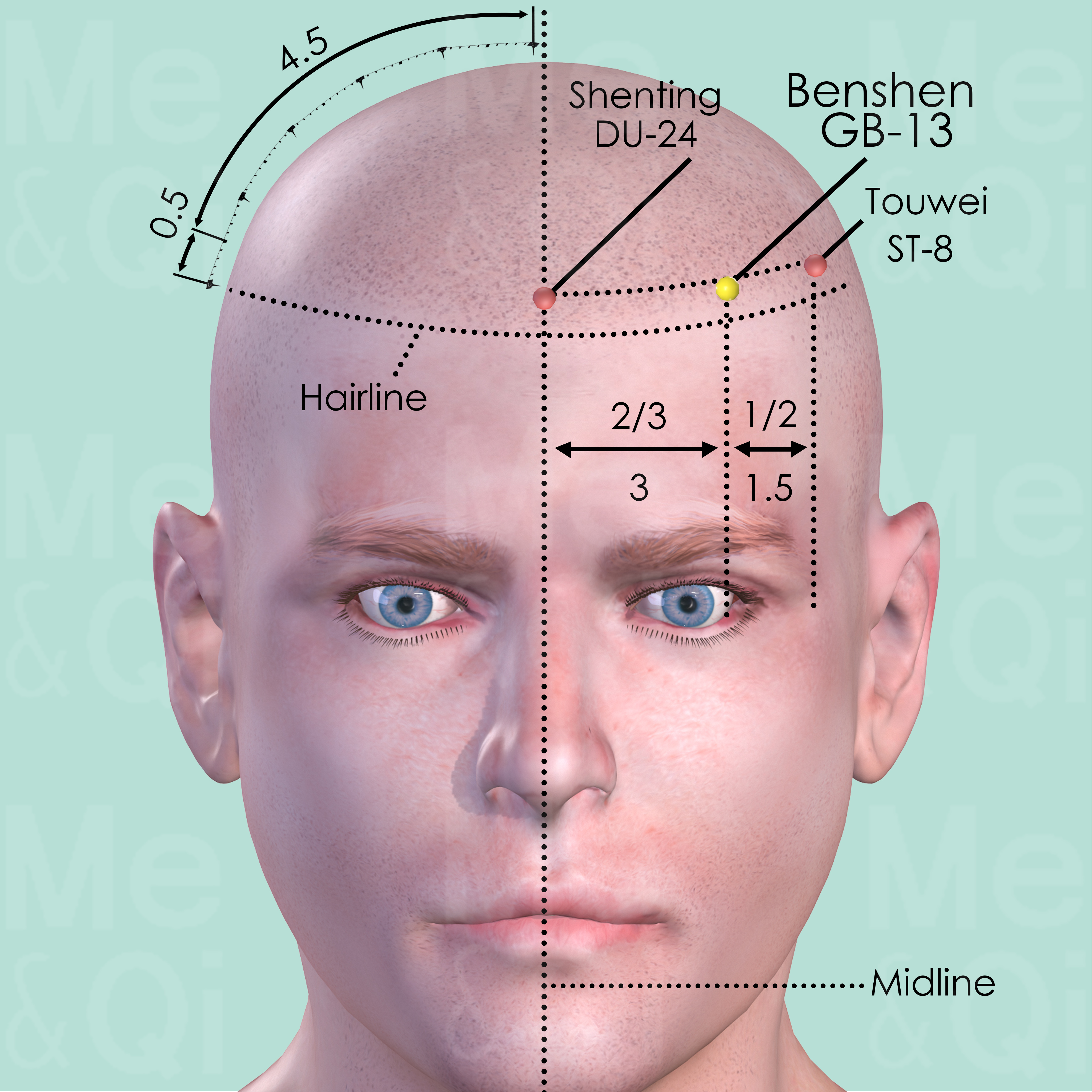
Benshen GB-13
0.5 cun within the hairline of the forehead, at the junction of the medial two-third and lateral third of the distance from Shenting DU-24 to Touwei ST-8.
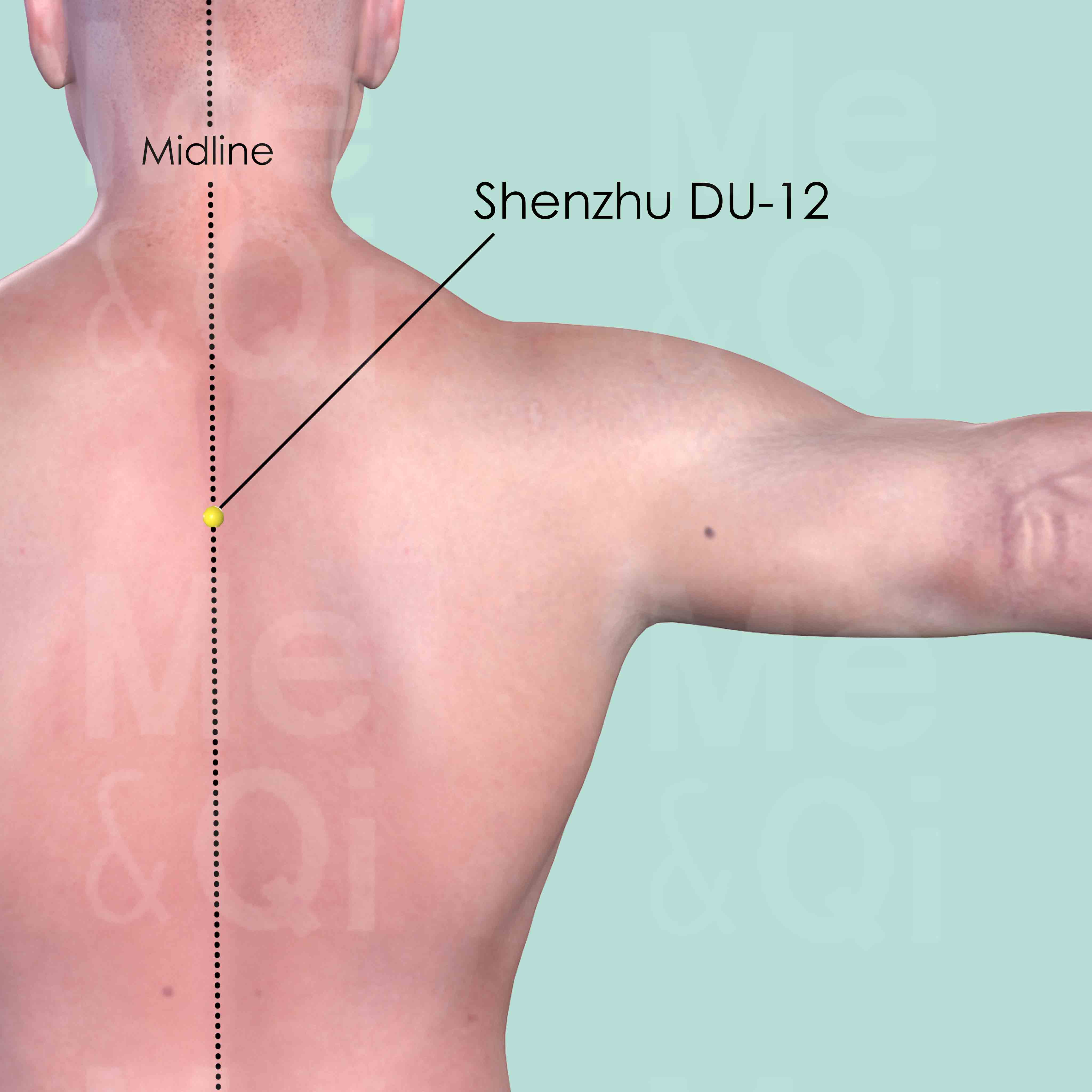
Shenzhu DU-12
On the back midline, in the depression below the spinous process of the 3th thoracic vertebra (T3).
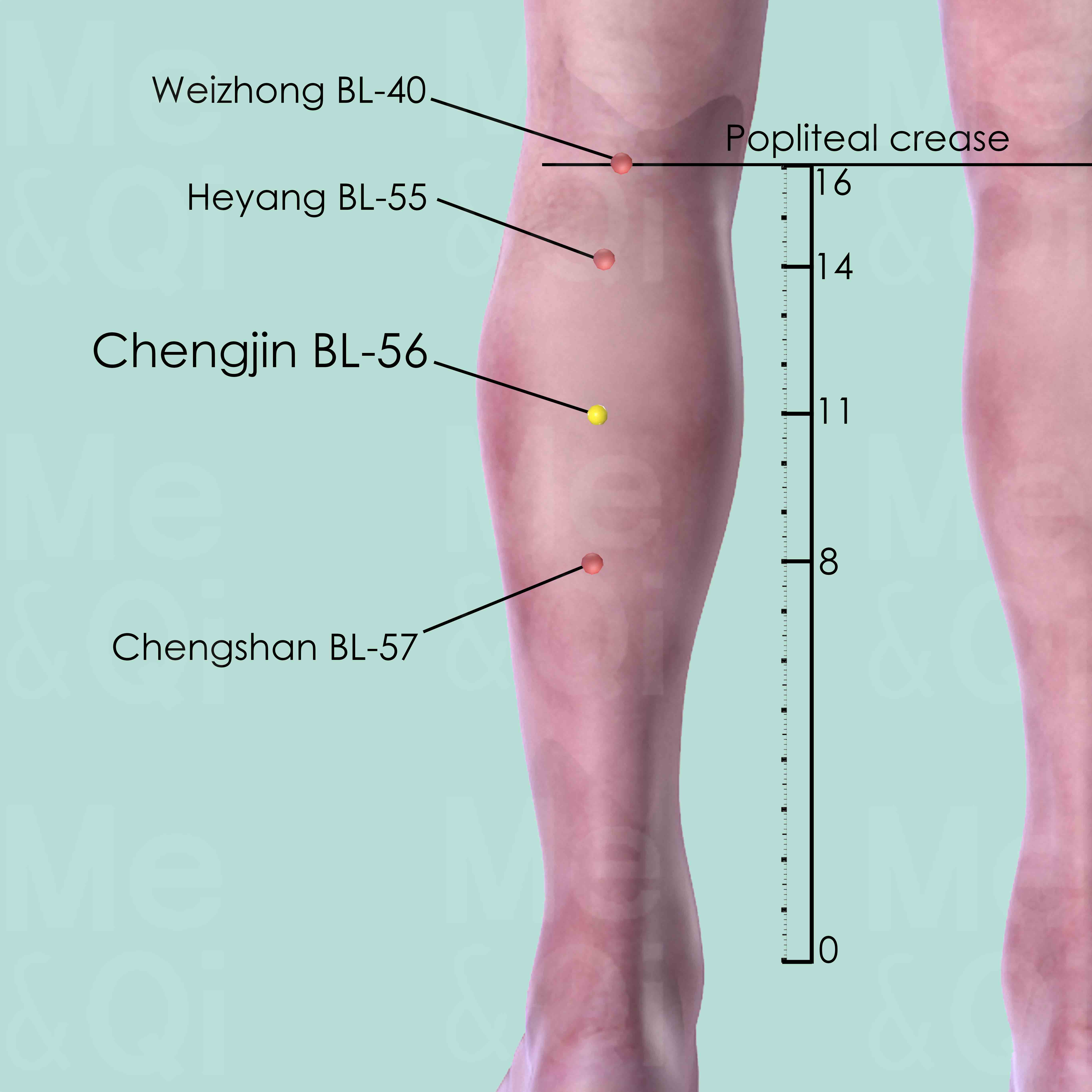
Chengjin BL-56
5 cun inferior to Weizhong BL-40 which is the midpoint of the popliteal crease. In the center of the belly of gastrocnemius muscle, midway between Heyang BL-55 and Chengshan BL-57.
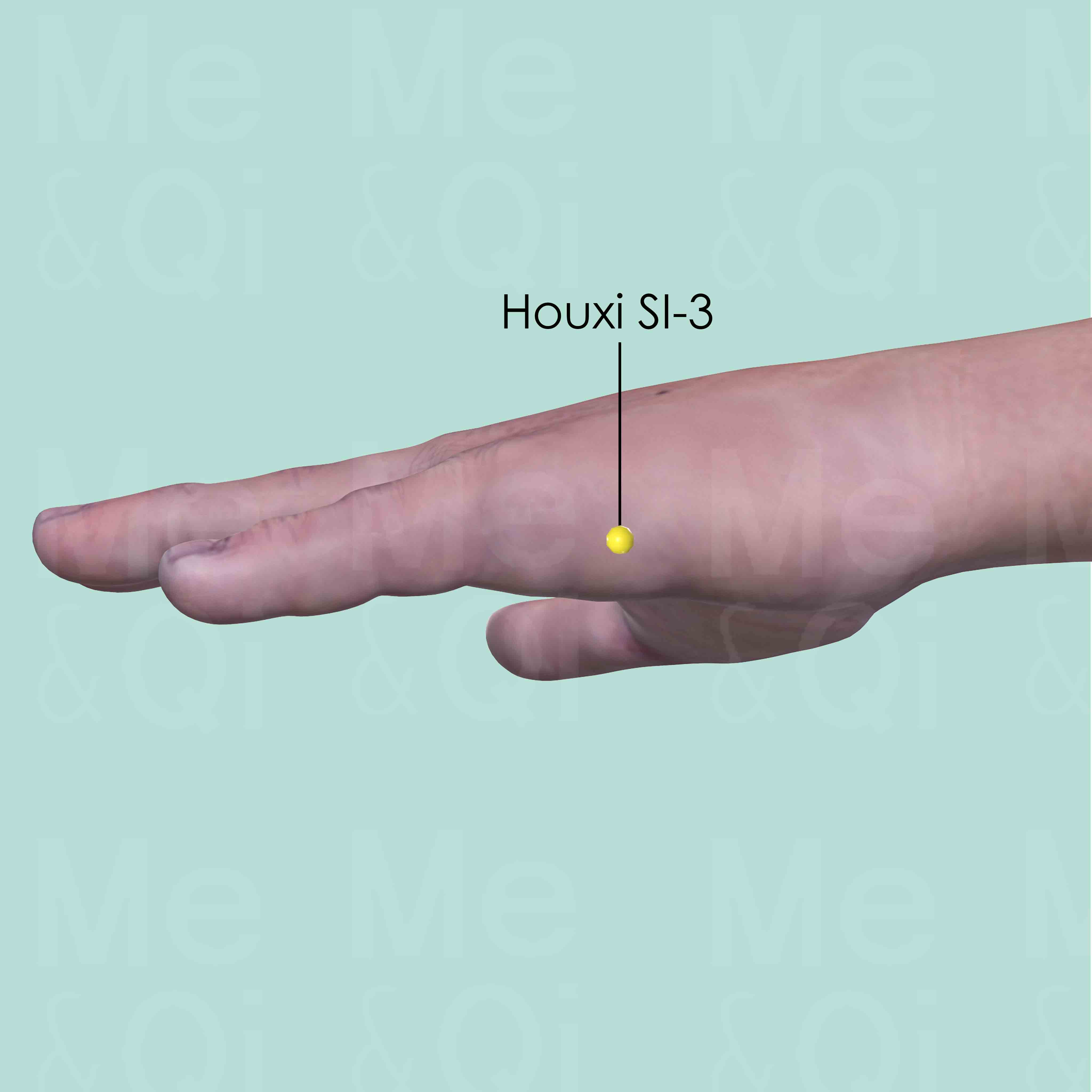
Houxi SI-3
Proximal to the head of the 5th metacarpal bone on the ulnar side, in the depression at the junction of the red and white skin.
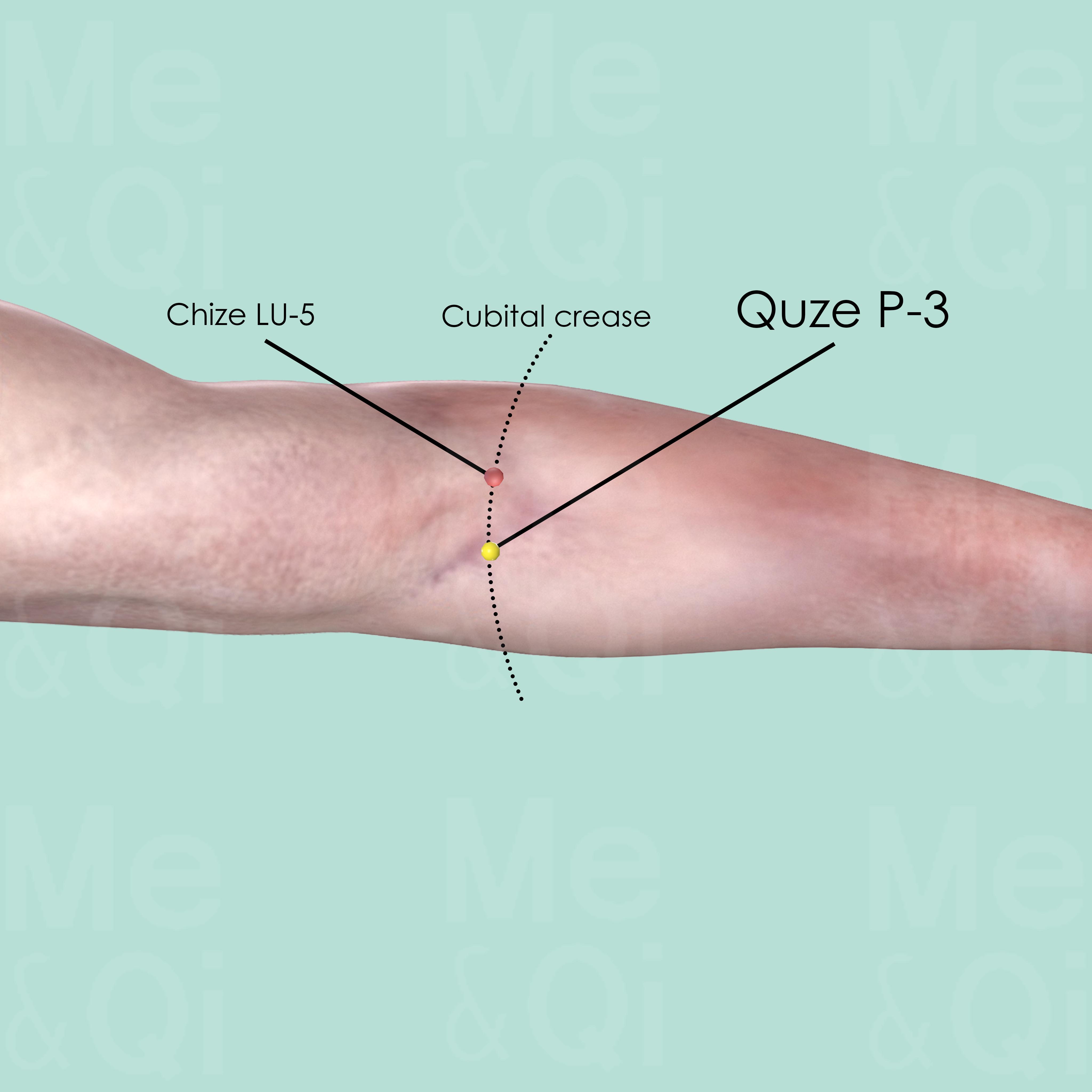
Quze P-3
On the transverse cubital crease, at the ulnar side of the tendon of biceps brachii muscle.

